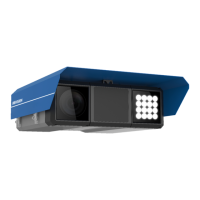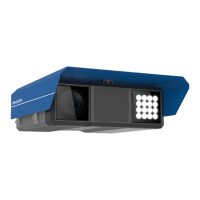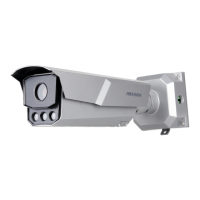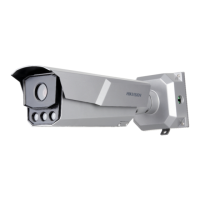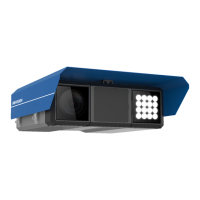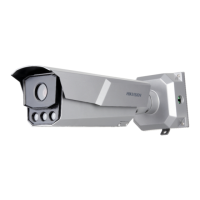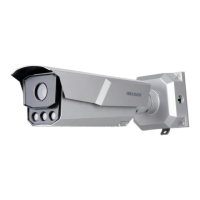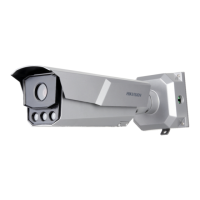Do you have a question about the HIKVISION iDS-TCV500-BI and is the answer not in the manual?
| Card reader integrated | Yes |
|---|---|
| Maximum memory card size | 128 GB |
| Maximum resolution | 2464 x 2056 pixels |
| Image quality adjustment | Saturation, Brightness, Contrast, Sharpness, DNR |
| Video compression formats | H.264, H.265 |
| Placement supported | Outdoor |
| Signal-to-Noise Ratio (SNR) | 60 dB |
| Number of users | 32 user(s) |
| Supported network protocols | TCP/IP, HTTP, HTTPS, FTP, DNS, DDNS, RTP, RTSP, RTCP, NTP, UPnP, IPv6, UDP |
| Focus | Motorized/Manual |
| Minimum illumination | 0.001 lx |
| Housing material | Aluminum |
| International Protection (IP) code | IP66 |
Details regarding FCC compliance and operational conditions for the device.
Specifies the two conditions under which the device complies with FCC rules.
Information on CE marking and compliance with European directives.
Details compliance with Industry Canada standards for digital devices.
Defines the meaning of symbols used throughout the document.
Emphasizes compliance with local laws and electrical safety regulations.
Guidelines for safe and proper use of the device's power supply.
Shows two ways to connect the device and computer via network cable or switch/router.
Explains the requirement to set a strong password before device use.
Allows viewing real-time video and capturing images from the device.
Instructions on how to start the live view using the toolbar.
How to capture live pictures or start recording video.
Accessing the live status and traffic flow statistics page.
Explains arming the device and its levels for data storage.
Displays the current traffic light status.
Allows viewing real-time traffic flow, average lane occupancy, and status.
Set protocol type and live view performance options.
Set the saving path for recorded video files.
Set saving paths for captured pictures and clipped video files.
Displays device model, serial number, firmware, and other hardware info.
Configure RS-485 and RS-232 parameters for communication.
Configure IPv4 and IPv6 network settings for device operation.
Set HTTP, RTSP, SDK, and SADP port numbers for client connection.
Configure DDNS for remote access with dynamic IP addresses.
Configure the device for remote platform access via EHome protocol.
Configure HTTPS for secure web access and authentication.
Configure time settings including zone, manual, and NTP synchronization.
Set time zone, manual time, or NTP synchronization.
Configure Daylight Saving Time settings for accurate timekeeping.
Enable user lock to prevent unauthorized access after multiple failed attempts.
Configure parameters for main and sub-streams, including bitrate and resolution.
Configure capture resolution and JPEG picture size.
Configure Region of Interest encoding for prioritizing image quality.
Set scheduled recording times and overwriting options.
Manage storage, format TF card, and set HDD quotas.
Configure FTP server for uploading captured pictures.
Enable cloud storage for pictures and license plates when device storage is limited.
Configure protocols for uploading license plate and mixed target information.
Set overlay information like percentage, font size, and color on captured images.
Configure OSD attributes, size, color, alignment, and display items.
Overlay OSD on composed pictures for enhanced evidence.
Configure license plate recognition for front or back plates.
Configure flash light modes, output, dwell time, and compensation.
Synchronize flash light phase position with traffic light signals.
Set up composed images for evidence, including zooming and offsets.
Configure vehicle features like color recognition and helmet detection.
Configure dual-shutter settings for preview and recording quality.
Adjust saturation, sharpness, white balance, and brightness.
Set video image parameters like brightness, contrast, and DNR.
Configure captured image parameters for recording.
Configure IR Cut Filter mode for day/night surveillance.
Calibrate traffic lights for accurate red light enforcement.
Configure mixed-traffic lane capture and speed detection.
Configure video analysis for e-police functions like red light running.
Configure external induction coils as trigger mode for capture.
Configure vehicle detector as trigger mode for capture.
Configure RS-485 radar for high accuracy speed detection.
View current device IP address and connection status.
Configure device accounts, permissions, and delete users.
Add new user accounts with specified types and permissions.
Modify existing user accounts' details and permissions.
Delete existing user accounts from the system.
Search and export log files for operations, alarms, and exceptions.
Reboot the camera to restart the device.
Restore factory default settings for the device.
Export debug files for troubleshooting and analysis.
Import configuration files for batch setup of multiple cameras.
Perform remote upgrade for the device firmware.
